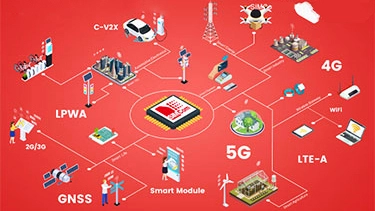3-D chips moving out of 'PowerPoint' era
BURLINGAME, Calif. – 3-D chips based on
through-silicon vias (TSVs) are moving past the ''PowerPoint
engineering’’ stage, but issues remain with the technology, according to
an analyst.
TSV-based 3-D devices have been in the works for
years. But except for select products, the technology has not moved
into the mainstream, limiting TSV to R&D or mere ''PowerPoint
slides.''
''3-D TSV looks easy in (a) PowerPoint,’’ said E. Jan
Vardaman, president of TechSearch International Inc., a research firm,
at the 3-D Architectures for Semiconductor Integration and Packaging
event here. ''PowerPoint engineering has high yield. 3-D TSV production
today does not.’’
In a presentation, Vardaman said TSV-based 3-D
has moved into the engineering stage, but mass production remains a
moving target. Initially, chip makers could move towards a so-called
2.5-D device based on an interposer technology, which could hit the
mainstream in 2012 or so. A full-blown TSV-based 3-D chip may not hit
the mainstream until 2013 to 2015, according to analysts.
Experts
define a true 3-D package as one that stacks various chips vertically
and then connects them by deploying through-silicon vias (TSVs). The aim
is to shorten the interconnections between the chips, reduce die sizes
and boost device bandwidths.
So far, chip makers are shipping
limited 3-D devices based on TSVs, mainly CMOS image sensors, MEMS, and,
to some degree, power amplifiers.
There are several problems
with TSV technology: Lack of EDA design tools; complexity of designs;
integration of assembly and test; cost; and lack of standards.
''3-D
TSV technology has moved past ‘PowerPoint’ engineering into real
engineering work,’’ she said. ''Structures have been fabricated.’’
One
of the big announcements in the arena was Xilinx Inc., which recently
discussed a ''stacked silicon interconnect’’ FPGA. The Xilinx
announcement is key ''in the establishment of a TSV infrastructure,’’
she said. ''Infrastructure is the key in the adoption of new
technology.’’
In the presentation, she listed the issues that must be resolved in the TSV arena:
1. Design guideline and software must be available
''Current design tools (are) not easily extended to 3-D ICs,’’ she said.
2. Thermal solutions must be developed especially for memory and processor.
3. Foundries must have design rules and qualified production lines
''Foundries
(are) installing 300-mm mass production lines, but many (are) not ready
for high-volume until 2012 and some even later,’’ she said.
4. The use of silicon interposer and other alternatives could delay TSV adoption
5. Who will provide the bump, assembly and test?

















